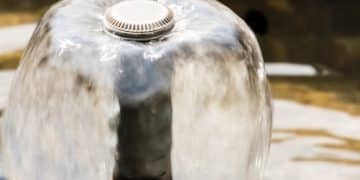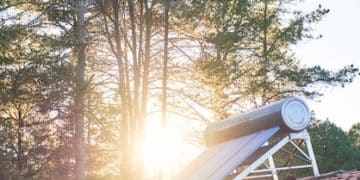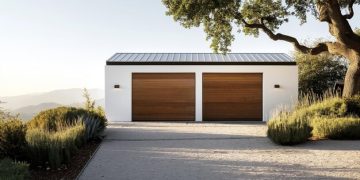Water Conservation Challenge: Cut Your Bill by 20%
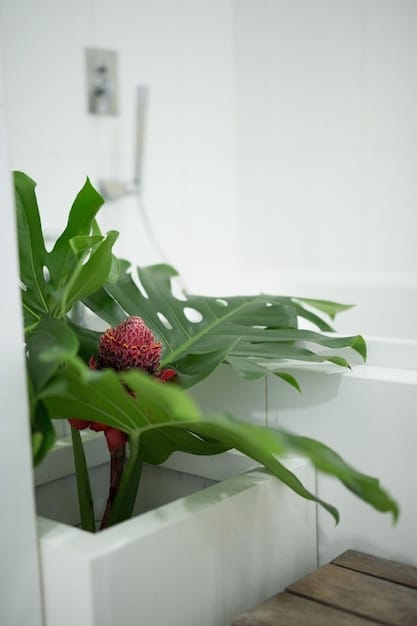
The Water Conservation Challenge provides simple changes to adopt at home, such as fixing leaks, upgrading to efficient appliances, shortening shower times, and optimizing outdoor watering, that can help cut your water bill by up to 20%.
Are you looking for practical ways to lower your monthly expenses while also contributing to a more sustainable environment? The Water Conservation Challenge: Cut Your Water Bill by 20% with These 4 Simple Changes offers a straightforward path to achieving both goals.
Understand Your Water Usage
Understanding your water usage is the first step in conserving water and reducing your bill. Many people underestimate how much water they use daily.
By gaining insights into your water consumption, you can identify areas where you’re using more water than necessary and implement strategies to cut back effectively. Let’s explore some ways to get a clear picture of your water footprint.
Check Your Water Bill
Your water bill is a valuable source of information about your household’s water usage. Reviewing your bill each month can help you track trends and identify spikes in consumption. It will also give you a baseline to compare against when you start implementing water-saving measures.
Use a Water Usage Calculator
Online water usage calculators are useful tools for estimating your daily water consumption. These calculators usually ask for information such as the number of people in your household, the types of water-using appliances you have, and your habits related to showering, laundry, and outdoor watering.
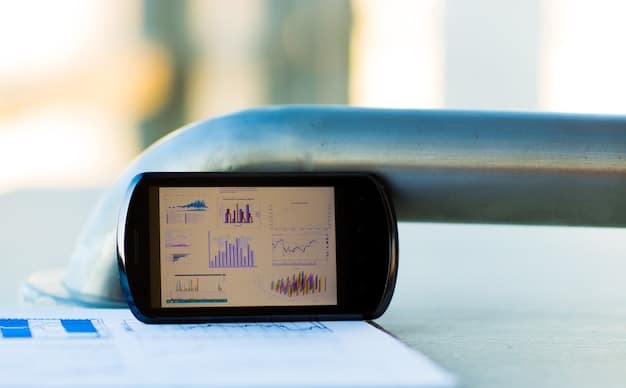
- Track Daily Consumption: Monitor how much water you use each day. Note how different activities impact your water usage. Awareness is the first step to change.
- Identify High-Use Activities: Determine which activities consume the most water in your home. This could be anything from long showers to frequent laundry loads.
- Set Conservation Goals: Based on your water usage analysis, set realistic water conservation goals. Aim to reduce your consumption by a specific percentage each month.
- Regularly Review and Adjust: Periodically review your water usage and adjust your conservation strategies as needed. Consistency is key to achieving long-term water savings.
By taking the time to understand your water usage, you can pinpoint areas where you can make the most significant impact. This knowledge will empower you to implement targeted strategies, ultimately leading to lower water bills and a more sustainable lifestyle.
Fix Leaks Promptly
One of the simplest and most effective ways to conserve water is to fix leaks promptly. Leaks, even small ones, can waste significant amounts of water over time.
Addressing leaks as soon as they are detected not only saves water but also prevents potential damage to your home. Lets delve into the world of leak detection and repair.
Inspect Faucets and Pipes
Conduct regular inspections of faucets and pipes throughout your home. Pay close attention to areas where leaks are common, such as under sinks, around toilets, and in the basement. Look for drips, water stains, or signs of moisture.
Check Toilets for Leaks
Toilets are a common source of hidden leaks. To check for leaks, add a few drops of food coloring to the toilet tank and wait about 15-20 minutes without flushing. If color appears in the toilet bowl, it indicates a leak.
By diligently detecting and repairing leaks, you can prevent considerable water waste and reduce your water bill.
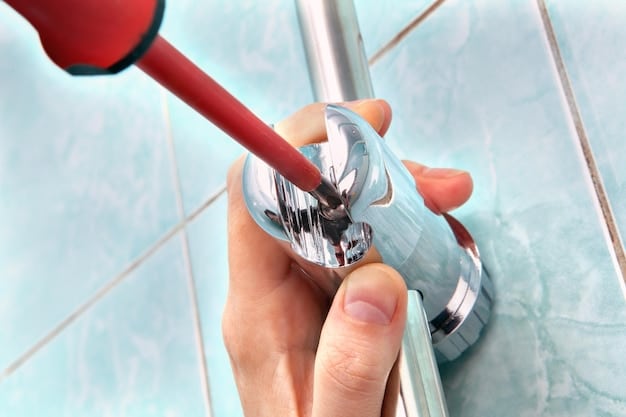
Upgrade to Water-Efficient Appliances
Upgrading to water-efficient appliances is an investment that pays off in the long run. Older appliances often use significantly more water than their modern, high-efficiency counterparts.
By replacing outdated appliances with water-saving models, you can reduce your water consumption and lower your utility bills. Let us explore the world of water-efficient appliances and how they can benefit your home.
Install Low-Flow Showerheads and Faucets
Low-flow showerheads and faucets are designed to deliver a satisfying water pressure while using less water. Look for models with the WaterSense label.
Replace Old Toilets With High-Efficiency Models
Toilets are one of the largest water users in many homes. Replacing old, inefficient toilets with high-efficiency models can result in substantial water savings.
- WaterSense Label: Look for appliances with the WaterSense label, which indicates that they meet EPA criteria for water efficiency and performance.
- Energy Efficiency: Consider appliances that are both water and energy efficient to maximize your savings.
- Long-Term Savings: While water-efficient appliances may have a higher upfront cost, they offer significant long-term savings.
Investing in water-efficient appliances and fixtures will not only reduce your monthly water bill but also contribute to a more sustainable environment.
Modify your habits
Modifying daily habits is a simple and sustainable approach to conserving water. Small changes in your routine can add up to significant water savings over time.
By consciously adopting water-saving habits, you can reduce your environmental footprint and lower your water bill. Let’s explore several practical ways to adjust your daily habits and conserve water.
Take Shorter Showers
Reducing the time you spend in the shower can save a remarkable amount of water. Try to shorten your showers by a few minutes.
Turn Off the Tap
Make it a habit to turn off the tap while brushing your teeth, shaving, or washing your hands. Running the water unnecessarily wastes gallons of water each day.
- Collect Rainwater: Place rain barrels or containers under downspouts to collect rainwater for watering plants and gardens.
- Reuse Water: Find opportunities to reuse water from activities such as washing vegetables or boiling pasta for watering plants.
- Spread Awareness: Encourage family members and friends to adopt water-saving habits and share tips on water conservation.
Modifying your daily habits can lead to substantial water savings without sacrificing your comfort or convenience.
Optimize Outdoor Watering
Outdoor watering accounts for a significant portion of household water use, especially during the warmer months. Optimizing your outdoor watering practices can conserve water.
Adjusting your irrigation schedule, using water-wise landscaping techniques, and selecting efficient watering devices can minimize water waste. Let’s explore practical strategies to optimize your outdoor watering.
Water Early in the Morning or Late in the Evening
Watering your lawn and garden during the cooler parts of the day, early morning or late evening, minimizes water loss due to evaporation.
Use a Soaker Hose or Drip Irrigation
Soaker hoses and drip irrigation systems deliver water directly to the roots of plants, reducing water waste and promoting healthy growth.
- Group Plants with Similar Needs: Group plants based on their water requirements to avoid overwatering or underwatering certain areas.
- Use a Rain Sensor: Install a rain sensor that automatically shuts off your sprinkler system when it rains, preventing unnecessary watering.
- Adjust Watering Schedule: Adjust your watering schedule based on weather conditions and seasonal changes to avoid overwatering during periods.
By implementing these strategies, you can reduce your outdoor water usage and create a beautiful, water-efficient landscape.
Monitor and Adjust Your Strategy
Conserving water is not just a one-time effort; it’s an ongoing process. To maximize your water savings and maintain a sustainable water usage, it is crucial to monitor and adjust your strategy regularly.
Tracking your progress, identifying trends, and adapting your approach based on the results will ensure that you continue to reduce your water bill. Let us explore ways to monitor and adjust your water conservation strategy.
Track Water Usage Trends
Keep a close eye on your monthly water bills and water meter readings. Look for trends in your water usage over time.
Identify Areas for Improvement
Regularly assess your water conservation efforts and identify areas where further improvements can be made.
| Key Point | Brief Description |
|---|---|
| 💧 Understand Usage | Track habits via bill & calculator. |
| 🔧 Fix Leaks | Repair faucets & check toilets. |
| 🚿 Upgrade Appliances | Install low-flow fixtures. |
| 🌱 Optimize Watering | Water early and use less. |
Frequently Asked Questions
▼
Add a few drops of food coloring to the toilet tank. Wait 15-20 minutes without flushing. If color appears in the bowl, you have a leak.
▼
A low-flow showerhead is designed to reduce the amount of water used while still providing adequate water pressure.
▼
The best time to water your lawn is early in the morning or late in the evening to minimize water loss from evaporation.
▼
Place rain barrels or containers under downspouts to collect rainwater. This water can be used for watering plants.
▼
The WaterSense label indicates that appliances meet EPA criteria for water efficiency and performance, guaranteeing water savings.
Conclusion
By implementing these water conservation strategies, you can make a meaningful impact on your water bill and contribute to a more sustainable future. Every drop saved counts towards a greater cause.
